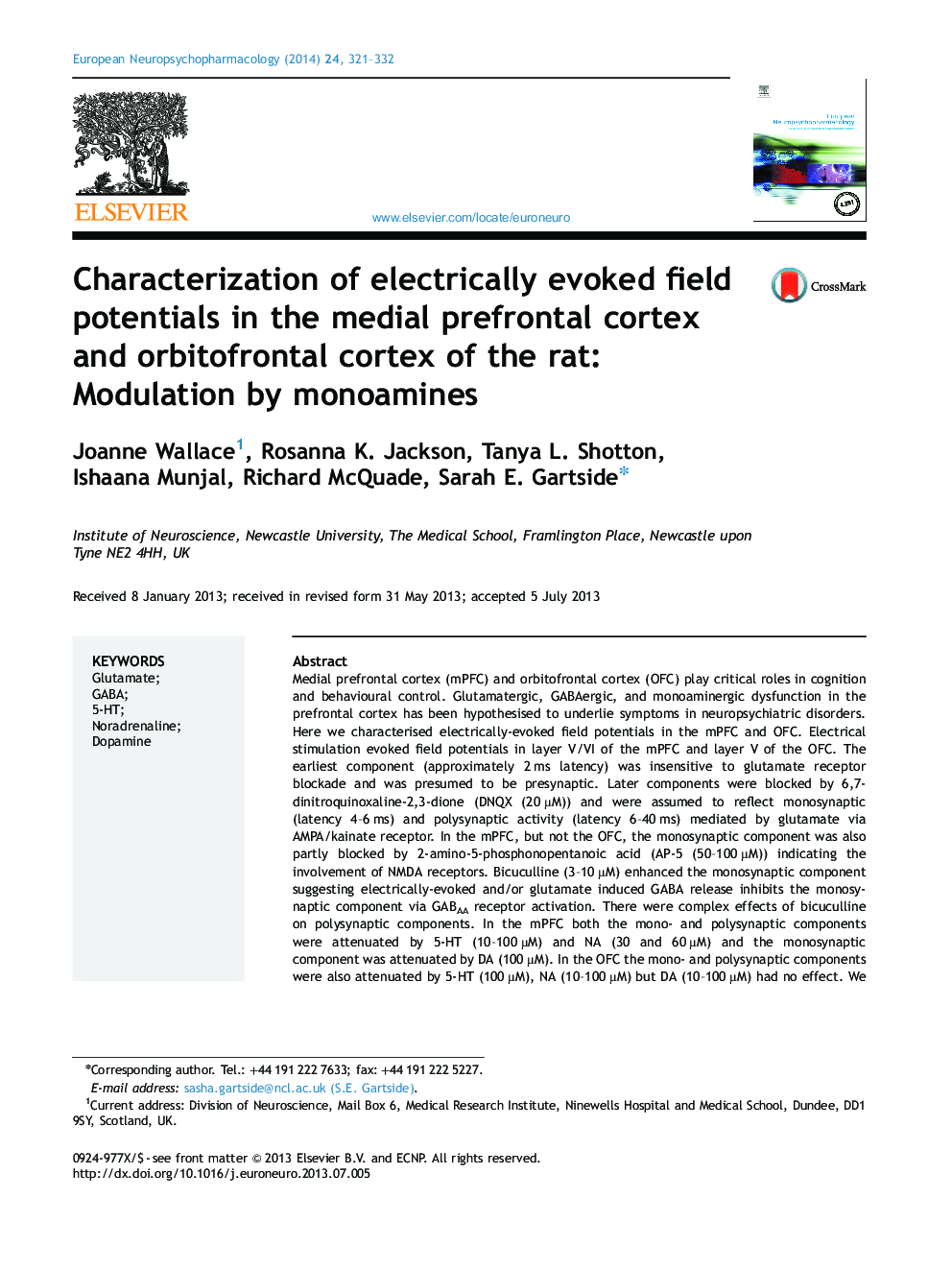| Article ID | Journal | Published Year | Pages | File Type |
|---|---|---|---|---|
| 319596 | European Neuropsychopharmacology | 2014 | 12 Pages |
Medial prefrontal cortex (mPFC) and orbitofrontal cortex (OFC) play critical roles in cognition and behavioural control. Glutamatergic, GABAergic, and monoaminergic dysfunction in the prefrontal cortex has been hypothesised to underlie symptoms in neuropsychiatric disorders. Here we characterised electrically-evoked field potentials in the mPFC and OFC. Electrical stimulation evoked field potentials in layer V/VI of the mPFC and layer V of the OFC. The earliest component (approximately 2 ms latency) was insensitive to glutamate receptor blockade and was presumed to be presynaptic. Later components were blocked by 6,7-dinitroquinoxaline-2,3-dione (DNQX (20 µM)) and were assumed to reflect monosynaptic (latency 4–6 ms) and polysynaptic activity (latency 6–40 ms) mediated by glutamate via AMPA/kainate receptor. In the mPFC, but not the OFC, the monosynaptic component was also partly blocked by 2-amino-5-phosphonopentanoic acid (AP-5 (50–100 µM)) indicating the involvement of NMDA receptors. Bicuculline (3–10 µM) enhanced the monosynaptic component suggesting electrically-evoked and/or glutamate induced GABA release inhibits the monosynaptic component via GABAA receptor activation. There were complex effects of bicuculline on polysynaptic components. In the mPFC both the mono- and polysynaptic components were attenuated by 5-HT (10–100 µM) and NA (30 and 60 µM) and the monosynaptic component was attenuated by DA (100 µM). In the OFC the mono- and polysynaptic components were also attenuated by 5-HT (100 µM), NA (10–100 µM) but DA (10–100 µM) had no effect. We propose that these pharmacologically characterised electrically-evoked field potentials in the mPFC and OFC are useful models for the study of prefrontal cortical physiology and pathophysiology.
